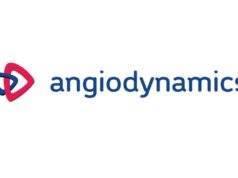 AngioDynamics has announced the safety and efficacy results from the RAPID (Registry of AngioVac system procedures in detail) database. Results were shared by principal investigator John Moriarty (University of California Los Angeles [UCLA], Los Angeles, USA) at this year’s Vascular Interventional Advances meeting (VIVA 2020; 6–8 November, virtual).
AngioDynamics has announced the safety and efficacy results from the RAPID (Registry of AngioVac system procedures in detail) database. Results were shared by principal investigator John Moriarty (University of California Los Angeles [UCLA], Los Angeles, USA) at this year’s Vascular Interventional Advances meeting (VIVA 2020; 6–8 November, virtual).
The registry was designed to evaluate the patterns of use, safety, and efficacy of the AngioVac system in the bulk removal of undesirable intravascular material. The registry enrolled 234 patients across 21 sites, surpassing its 200-patient enrolment goal. Among enrolled patients, 48.3% had a mass in the right heart, 35.9% had caval thromboemboli, 8.5% had catheter related thrombi, 1.7% had a pulmonary embolism, and 5.6% had a combination of the above.
“RAPID represents the largest catheter-based thromboaspiration study completed to date, and we are pleased to share its positive findings,” said Scott Centea, AngioDynamics senior vice president and general manager, VIT/PAD. “A growing number of providers are recognising the AngioVac system as a critically important tool in the treatment and removal of thrombi and emboli. The overwhelmingly positive results from the RAPID registry demonstrate that the AngioVac system is appropriate for use by a wide range of providers treating thrombus, clot, and vegetations in both peripheral deep vein thrombosis (DVT) and the right heart.”
Findings from the RAPID registry have been accepted for publication in the Journal of Vascular and Interventional Radiology.
The primary objective of the registry was to capture data on the use of the AngioVac system for various anatomic locations. Greater than 70% of clot/mass removal was achieved in a majority of the patient population. Overall, the study confirmed the AngioVac system to be versatile, safe, and effective for the removal of vascular thrombi and cardiac masses across a broad range of patient populations.
“Our goal threshold was to remove over 70% of the clot, which we felt was clinically relevant, and each of the three main groups—the caval group, the right heart group, and the catheter associated clot group—were associated with very high rates of clot removal,” commented Moriarty. “In the first two years of the registry, there were more caval thrombectomies than right heart mass procedures, and that flipped in the latter two years. If we were to extrapolate our trajectory, we would say that close to 70% of all procedures are being performed in the right heart. Additionally, the AngioVac system was successfully tested by a number of different practitioners, including cardiologists, EP cardiologists, cardiac surgeons, vascular surgeons, and interventional radiologists. Ultimately, the diversity of providers, combined with the efficacy and safety results, demonstrates the unique and versatile nature of the AngioVac system.”













